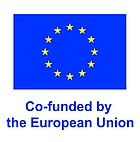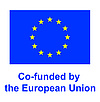
What is GreenChips-EDU about?
GreenChips-EDU is a EU-funded education project (October 2023 - September 2027).
The project partners work on
- create innovative education material to integrate sustainability aspects into microelectronics education
- digitalising course material to make (online) access possible
- organising student mobility opportunities through industry-academia collaboration
- streamlining masters programmes & designing special courses
Who are we?

GreenChips-EDU brings together European key players in microelectronics education and innovation. Within this project, we develop new courses and formats to attract more talents to the semiconductor industry.
- Check the Consortium Partners page.
- Meet the persons behind the project on the Team's page.
What do we offer?

For students, we offer the following opprtunities:
Co-Funded by the European Union. Views and opinions expressed are however those of the author(s) only and do not necessarily reflect those of the European Union. Neither the European Union nor the granting authority can be held responsible for them.

NEWS & EVENTS
OBJECTIVES




